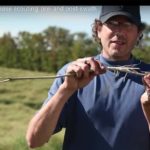Reading Time: 4 minutes Fifteen years ago, Dan Orchard was working as an agronomist at a retailer when he got a phone call about something “funny” in a customer’s canola field. The plants were prematurely ripened and the roots looked strange. Orchard had a hunch of what he was looking at, but a visit with a plant pathologist confirmed […] Read more

When it comes to the big two crop diseases, those really were the good old days
Fifteen years ago, a ‘funny’ new disease was found — today clubroot combined with fusarium is a killer one-two punch

Wheat research receives funding
Reading Time: < 1 minute Eleven research projects ranging from nitrogen fertilizer use and soil health to drying grain while in storage are receiving $2.2 million from the Saskatchewan Wheat Development Commission and Alberta Wheat. Three of the projects are on fusarium head blight (management, resistance, and post-harvest strategies) while four are either focused on, or have a significant component […] Read more

Proper combine adjustment pays off now and later
You don’t want fusarium-damaged kernels lowering grade or spreading spores, says crop specialist
Reading Time: 3 minutes Producers need to make combine adjustments to prevent kernels damaged by fusarium head blight from going into storage, says a provincial crop specialist. Harvest management of fusarium-damaged kernels (FDK) will improve the grade of a cereal crop, said Neil Whatley. “Many FDKs — especially in wheat — are smaller, lighter in weight, and more shrunken […] Read more

Pearce: Multiple modes of action an emerging reality for fungicides
As growers face more challenges from weeds, diseases and insects, many researchers, agronomists, advisers and farmers have shifted thinking from “control” of pests to “managing” them. Some of this trend is attributable to single-mode-of-action products and a reliance on one or two chemistries or technologies — but the adaptability of weed, disease and insect species […] Read more

FHB risk website has new features
Reading Time: < 1 minute The Alberta FHB risk website has been updated. The site has a Fusarium Disease Severity Value gauge and 10-day running risk evaluation tool to help producers decide on fungicide applications. A number of weather features have recently been added. They include weather station data; a prevailing wind map that can be updated hourly for a […] Read more

It’s a Spornado! But that’s good news for cereal growers
New tool for detecting disease-causing spores being rolled out across the Prairies
Reading Time: 3 minutes Hold on to your hats — the Spornado is coming. “(The Spornado) is a really good tool that’s been developed over the last couple of years,” said Trevor Blois, disease diagnostician for 20/20 Seed Labs. “It’s just a passive spore catcher that has been used by potato growers in Ontario to detect late blight spores, […] Read more

Don’t let your guard down — fusarium still a risk
Dry weather greatly reduced the incidence of the fungal disease last year, but the threat is likely greater than ever
Reading Time: 3 minutes Producers should be on the lookout for fusarium head blight this year, even though the incidence of the fungal disease was down in 2017. “Forecasting head blight is really quite challenging,” said Mike Harding, a research scientist and plant pathologist with Alberta Agriculture and Forestry. Read more: Provincial legislation isn’t helping fusarium battle, say seed growers […] Read more

Provincial legislation isn’t helping fusarium battle, say seed growers
Grower groups argue a zero-tolerance approach is the wrong way to reduce its spread in Alberta
Reading Time: 3 minutes Fusarium graminearum is listed as a pest in the province, and that’s causing trouble for the crop industry. “Now that it’s in the pest act, it’s hard to get it out of the pest act,” said Ward Oatway, chair of the Alberta Seed Growers Association and owner of Oatway Seeds in Lacombe. His association, the […] Read more

Mycotoxins — the invisible danger for livestock
Ruminant nutritionist offers tips to ensure feed doesn’t pose a health hazard to your cattle
Reading Time: 3 minutes Mould and mycotoxins can be tricky, but there are a few tips that can help prevent them from hurting your cattle. That was the message that Amanda Van De Kerckhove, ruminant nutritionist with Co-op Feeds, brought to Northlands’ first BeefTech event. “It can be a little overwhelming when you look at all the factors that […] Read more

Now is the time to create next year’s battle plan for fusarium
Scouting this year is the first step in limiting the impact of the cereal disease next year
Reading Time: 2 minutes Although it’s likely too late to apply a fungicide for fusarium graminearum, producers can still use the information they gather about the outbreak to plan for subsequent growing seasons. Fusarium graminearum is considered the most important fusarium head blight (FHB) species due to its aggressiveness and production of deoxynivalenol or DON (a.k.a. vomitoxin), said crop […] Read more

